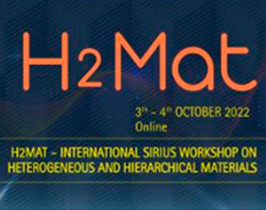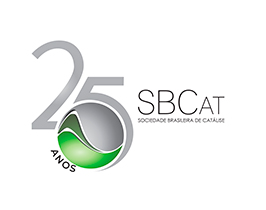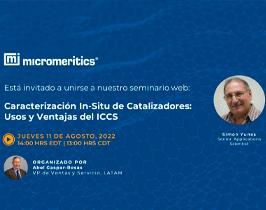Accessibility Tools
 O professor e doutor Eduardo Falabella, com muito prazer, anuncia a publicação de seu novo livro: "Decarbonization as a route towards sustainable circularity", com a participação de Mireya Goldwasser, Venezuelana de Ciências, e Magdalena Ramirez, pesquisadora senior do laboratório de Idaho Falls, EUA. No livro, será discutido os conceitos de sustentabilidade e circularidade, bem como as rotas de CCUS (Carbon Capture Utilisation and Storage).
O professor e doutor Eduardo Falabella, com muito prazer, anuncia a publicação de seu novo livro: "Decarbonization as a route towards sustainable circularity", com a participação de Mireya Goldwasser, Venezuelana de Ciências, e Magdalena Ramirez, pesquisadora senior do laboratório de Idaho Falls, EUA. No livro, será discutido os conceitos de sustentabilidade e circularidade, bem como as rotas de CCUS (Carbon Capture Utilisation and Storage).
O livro será publicado pela Springer em seu site. Clique AQUI e acesse.

Prezados amigos catalíticos,
é com grande pesar que comunicamos o falecimento do Professor Daniel Duprez, no fim de semana passado. A Sociedade Brasileira de Catálise se solidariza com a comunidade francesa e manifesta os mais profundos sentimentos a todos os familiares e amigos do Professor Daniel Duprez.
O professor Daniel Duprez era pesquisador Emérito da Universidade de Poitiers e transcrevemos abaixo texto publicado em sua homenagem na página da Universidade de Poitiers.
Homenagem ao Professor Daniel Duprez (1945 –2022)
Nascido em 1945, Daniel Duprez graduou-se como Engenheiro da Ecole Nationale des Industries Chimiques (Escola Nacional das Indústrias Químicas) ENSIC (Nancy) em 1967. Após entrar no CNRS em 1969, Daniel Duprez defendeu Doutorado em Ciências (INPL Nancy) em 1975. Seus trabalhos tinham como tema a conversão de aromáticos empregando aluminas e o estudo de mecanismos de formação de moléculas aromáticas em carvão. Após um período de 2 anos (1976-1978) no grupo "Catalyse" do centro de pesquisa Elf-Solaise, ingressou no laboratório de catálise em Poitiers, em 1978.
Foi durante este período que ele iniciou os primeiros trabalhos sobre a reforma a vapor seletiva dos aromáticos empregando metais. Estes trabalhos lhe permitiram desenvolver o conceito de mobilidade superficial em catálise. As velocidades de reação sendo muito mais afetadas pela natureza do suporte do que pela fase metálica, ele propôs um mecanismo bifuncional metal/suporte no qual o hidrocarboneto é ativado pelo metal e a água nos sítios hidrofílicos do suporte. É para medir essa mobilidade que ele desenvolveu uma técnica de troca 18O/16O usando o metal como porta de entrada de oxigênio no material. A experiência adquirida na área de hidrocarbonetos foi posteriormente aplicada à reforma a vapor de álcoois e em particular de etanol para a produção de hidrogênio (células a combustível).
Desde a década de 1990, Daniel também aplicou o conceito de mobilidade à catálise de despoluição automotiva, onde o princípio de "armazenamento de oxigênio" em materiais provou ser decisivo para explicar o aumento do desempenho de catalisadores à base de céria em condições transitórias de concentração de oxigênio. A ferramenta desenvolvida em Poitiers foi adaptada ao estudo de materiais com mobilidade de oxigênio muito alta (céria e especialmente compostos mistos céria - zircônia), introduzindo no modelo de mobilidade etapas adicionais, como a formação de espécies superóxidos e peróxidos. Mais recentemente e particularmente desde seu emérito em 2011, Daniel Duprez se concentrou em entender o papel de interfaces e contornos de grão (deslocamentos) em fenômenos de mobilidade e processos catalíticos. Sua expertise reconhecida mundialmente dos Estados Unidos ao Japão se traduz em mais de 300 publicações científicas, 20 resenhas e capítulos de livros e 78 conferências convidadas.
Paralelamente à sua intensa atividade científica, Daniel desempenhou um importante papel no desenvolvimento da catálise heterogênea em Poitiers, sendo vice-diretor do Laboratoire de Catalyse en Chimie Organique (Laboratório de Catálise em Química Orgânica - LACCO) entre 1991 e 1999 e depois diretor do LACCO por 2 mandatos, 2000 a 2007. Em seguida, dirigiu a Federação REAUMUR de 2008 a 2010, o que levou à criação do Institut de Chimie, des Milieux et Matériaux de Poitiers (Instituto de Química, Meios e Materiais de Poitiers) (IC2MP).
Daniel Duprez contribuiu muito para promover a catálise francesa a nível internacional, em particular através do seu papel como Presidente da Divisão de Catálise da Société Chimique de France de 2006 a 2010 e depois de 2011 a 2012.
Daniel Duprez também trabalhou arduamente para educar as gerações futuras nos princípios fundamentais e na prática da catálise. Ele serviu desinteressadamente à comunidade química organizando ou ajudando a organizar simpósios e conferências internacionais. Ele ensinou a comunidade através de excelentes revisões críticas e muito importantes sobre diferentes aspectos da catálise. Ao longo da sua carreira, incorporou o espírito de professor e pesquisador, ao mesmo tempo que deu contribuições muito importantes para a aplicação da catálise em áreas com grande impacto na síntese química sustentável e na produção de vetores energéticos para o futuro.
Diretor de Pesquisa Emérito de 2011 a 2021, Daniel continuou a vir regularmente ao IC2MP para discutir com seus colegas e repassar seus conhecimentos, sempre com gentileza. Tendo partido para Lyon por um ano por motivos de saúde e para se aproximar de seus filhos, ele continuou a se comunicar profissionalmente e pessoalmente. Sua curiosidade científica permaneceu muito presente e, do seu envio ocasional de artigos de revistas científicas ou não para discutir eventos atuais sentiremos tristemente falta. Todas as pessoas que tiveram a oportunidade de colaborar com ele lembrarão, além de suas qualidades científicas, suas muitas qualidades humanas como sua generosidade, seu espírito sempre construtivo e seu otimismo.

Promoted by the Brazilian Synchrotron Light Laboratory (LNLS) of the Brazilian Center for Research in Energy and Materials (CNPEM) the International Sirius Workshop on Heterogeneous and Hierarchical Materials (H2Mat) will be held in virtual mode on 3-4 October 2022.
Registrations with abstract submission are open until 30 August.
The H2Mat workshop aims to bring together the LNLS-CNPEM external users’ community and experts at synchrotron radiation and related techniques applied to hierarchical and heterogeneous materials. Researchers and students are invited to present their scientific cases and discoveries in multidisciplinary fields.
Find more about Invited Speakers and important dates at the H2Mat website. In case of questions, contact us at: Este endereço de email está sendo protegido de spambots. Você precisa do JavaScript ativado para vê-lo..
 Neste dia tão especial a SBCAT está comemorando 25 anos!
Neste dia tão especial a SBCAT está comemorando 25 anos!
É com muito orgulho que vemos o crescimento desta comunidade, que cada vez mais se destaca no âmbito nacional e internacional, gerando conhecimento, formando alunos, promovendo descobertas cientificas e realizando grandes parcerias.
Agradecemos a todas as diretorias, desde a sua fundação e seguimos com o nosso objetivo de fortalecer a Catálise no Brasil.

Você está convidado a participar do nosso webinar!
Título: Caracterización In-Situ de Catalizadores: Usos y Ventajas del ICCS
Data: Quinta-feira, 11 de agosto de 2022.
Horário: 14h
Duração: 1 hora
Descrição: Los desafíos de la catálisis son permitir transformaciones que son "imposibles" porque son cinéticamente lentas: desarrollar transformaciones en unos pocos pasos sintéticos, activar moléculas "inertes" como ciertos gases, aumentar la selectividad de las reacciones favoreciendo la formación de un producto, entre otras posibilidades. Como resultado, la caracterización de los catalizadores siempre ha estado en el centro de los estudios para evaluar su rendimiento intrínseco así como su viabilidad económica.
Hasta ahora, la mayoría de los análisis solo eran posibles al retirar el catalizador de su entorno funcional, provocando así posibles cambios en su estado.
La introducción de ICCS (In Situ Catalyst Characterization en inglés) ofrece nuevas posibilidades, pero sobre todo información más "verdadera" sobre el estado de los catalizadores: el antes, y especialmente el después de la reacción. Los principales análisis como TPX o química pulsada ahora son posibles dejando el catalizador en su entorno y usando las mismas condiciones de trabajo (presión máxima 20 bars).
Clique AQUI para realizar sua inscrição.
